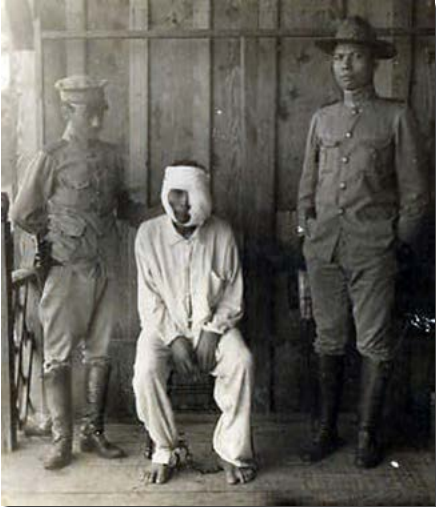|
Balangiga, Eastern Samar
Balangiga (IPA: Œbalaŋˈhɪga, officially the Municipality of Balangiga ( war, Bungto han Balangiga; tl, Bayan ng Balangiga), is a 4th class municipality in the province of Eastern Samar, Philippines. According to the 2020 census, it has a population of 14,341 people. Balangiga is the site of the Balangiga Encounter in 1901, which remains one of the longest-running and most controversial issues of the Philippine–American War. History Balangiga Encounter and Bells During the Philippine-American War, on September 28, 1901, Eugenio Daza, Area Commander of Southeastern Samar and Valeriano Abanador, the Balangiga's pulahan chief, launched an attack on U.S. Army Company C 9th Infantry Regiment who were occupying Balangiga. With Philippine Revolutionary Army forces and Balangiga villagers, killing 48 and wounding 22 of the 78 men of the unit, with only four escaping unhurt and four missing in action. The villagers captured about 100 rifles and 25,000 rounds of ammunition. An es ... [...More Info...] [...Related Items...] OR: [Wikipedia] [Google] [Baidu] |
List Of Sovereign States
The following is a list providing an overview of sovereign states around the world with information on their status and recognition of their sovereignty. The 206 listed states can be divided into three categories based on membership within the United Nations System: 193 UN member states, 2 UN General Assembly non-member observer states, and 11 other states. The ''sovereignty dispute'' column indicates states having undisputed sovereignty (188 states, of which there are 187 UN member states and 1 UN General Assembly non-member observer state), states having disputed sovereignty (16 states, of which there are 6 UN member states, 1 UN General Assembly non-member observer state, and 9 de facto states), and states having a special political status (2 states, both in free association with New Zealand). Compiling a list such as this can be a complicated and controversial process, as there is no definition that is binding on all the members of the community of nations concerni ... [...More Info...] [...Related Items...] OR: [Wikipedia] [Google] [Baidu] |
Internal Revenue Allotment
The Internal Revenue Allotment (IRA) is a local government unit’s (LGU) share of revenues from the Philippine national government. Provinces, independent cities, component cities, municipalities, and barangays each get a separate allotment. The allotment is largely based upon the type of government they are and a formula based upon their land area and population. Section 284 of the Local Government Code of the Philippines (RA 7160) sets up the formula for the distribution of the allotment. All or nearly all of the revenue that a local government has to spend comes from their IRA, though some local governments also have additional local sources of revenue such as property taxes and government fees. Typically for municipalities, the IRA accounts for 90% of total revenues. Since cities have more sources of local revenues, their IRA ranges from 50% to 70% of their total budget. A portion of each local government unit's allotment is set aside their Sangguniang Kabataan S ... [...More Info...] [...Related Items...] OR: [Wikipedia] [Google] [Baidu] |
9th Infantry Regiment (United States)
The 9th Infantry Regiment ("Manchu") is a parent infantry regiment of the United States Army. Unrelated units designated the 9th Infantry Regiment were organized in the United States Army in 1798 during the Quasi-War, in 1812 during the war of 1812, and in 1847 during the Mexican–American War. The 1812 regiment fought in the Battle of Lundy's Lane, and the 1847 regiment in the Battle for Mexico City. The lineage of the current regiment begins with the 1855 organization of the 9th Infantry Regiment, which was dispatched to the Pacific Northwest, where it served in the American Indian Wars. The regiment remained in the west during the American Civil War, garrisoning posts near San Francisco. After the end of the American Civil War the regiment continued its service through the final Indian Wars, then fought at the Battle of San Juan Hill during the Spanish–American War. During the Boxer Rebellion, the 9th Infantry was sent to China, where it earned the nickname Manchu. After ... [...More Info...] [...Related Items...] OR: [Wikipedia] [Google] [Baidu] |
Pulahan
The Pulahan (literally "those wearing red" in Cebuano; es, pulajanes), also known as dios-dios, were the members of a religious revival of Philippine beliefs that developed in the Visayas prior to the Philippine Revolution. At its peak, it numbered around 10,000–15,000 adherents. The movement was severely crippled during the Philippine Revolution after the Philippine Constabulary took over patrols in Samar, when the U.S. military declared the island as "pacified". Description Pulahanes practiced a syncretic religious revival centered mostly on Philippine mythology and Folk Catholicism. Individual beliefs include the anting-antings as well as the revival of the babaylan. Indigenous fighting techniques such as eskrima were also used in the elite and ferocious combat style. They practiced a form indigenous martial arts called Derobio Eskrima and they specialize using a heavy, crescent-shaped bolo knife in their battles. Religious rituals using bottles of holy oil, prayer ... [...More Info...] [...Related Items...] OR: [Wikipedia] [Google] [Baidu] |


